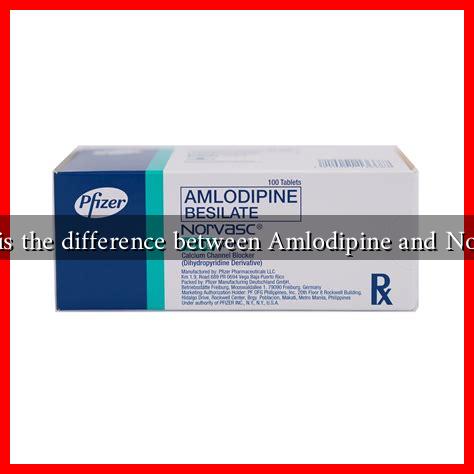-
Table of Contents
What is the Difference Between Amlodipine and Norvasc?
Amlodipine and Norvasc are terms that often cause confusion among patients and healthcare professionals alike. While they are closely related, understanding their differences is crucial for effective treatment of hypertension and other cardiovascular conditions. This article will delve into the specifics of both, highlighting their uses, mechanisms, and key distinctions.
Understanding Amlodipine
Amlodipine is a medication classified as a calcium channel blocker. It is primarily used to treat high blood pressure (hypertension) and angina (chest pain). By relaxing the blood vessels, Amlodipine allows for easier blood flow, which can help reduce the workload on the heart.
Mechanism of Action
Amlodipine works by inhibiting the influx of calcium ions into vascular smooth muscle and cardiac muscle. This action leads to:
- Vasodilation of peripheral and coronary arteries
- Reduction in myocardial oxygen demand
- Lowering of blood pressure
Common Uses
Amlodipine is commonly prescribed for:
- Essential hypertension
- Chronic stable angina
- Vasospastic angina
What is Norvasc?
Norvasc is actually the brand name for Amlodipine. It is manufactured by Pfizer and is one of the most widely prescribed medications for hypertension and angina. The active ingredient in Norvasc is Amlodipine besylate, which is the salt form of Amlodipine.
Brand vs. Generic
The primary difference between Amlodipine and Norvasc lies in their branding:
- Amlodipine: This refers to the generic version of the drug, which may be produced by various manufacturers.
- Norvasc: This is the branded version, which may have different inactive ingredients or formulations.
Comparative Analysis
While Amlodipine and Norvasc serve the same purpose, there are some nuances worth noting:
Cost and Accessibility
Generic medications like Amlodipine are typically less expensive than their branded counterparts. According to a report by the GoodRx, the average cost of Amlodipine can be significantly lower than that of Norvasc, making it a more accessible option for many patients.
Side Effects
Both Amlodipine and Norvasc share similar side effects, including:
- Swelling of the legs or ankles
- Flushing
- Palpitations
- Dizziness
However, some patients may respond differently to the generic versus the brand name due to variations in inactive ingredients.
Effectiveness
Clinical studies have shown that both Amlodipine and Norvasc are effective in managing hypertension and angina. A study published in the Journal of Hypertension indicated that both forms of the medication produced similar outcomes in blood pressure reduction and patient satisfaction.
Conclusion
In summary, Amlodipine and Norvasc are essentially the same medication, with Norvasc being the brand name for Amlodipine besylate. The choice between the two often comes down to cost, availability, and personal preference. Understanding these differences can empower patients to make informed decisions about their treatment options. Always consult with a healthcare provider to determine the best course of action for your specific health needs.


